Spanish News Today Editors Roundup Weekly Bulletin Oct 17

TOP STORY: "DANA Alice has left 100,000 people without safe drinking water for almost a week: What went wrong?"
This time last week, we were waiting on tenterhooks for Dana Alice to hit. Now, we’re reeling in her aftermath. While we might have expected flooded roads and even downed trees following such a serious weather episode, what nobody was prepared for was 100’000 people being left without drinking water for almost a week.
But that’s the unfortunate situation facing so many households in the Mar Menor at the moment and naturally, when the chips are down, the gloves come off and there’s plenty of blame being slung about.
It’s not all bad news, although it’s fair to say it’s been a week of ups and downs. On the plus side, many of us will leave the pharmacy with a few more euros in our pockets as thousands of meds have been reduced in price, some pay-packets will receive a welcome boost and there’s been an adorable surprise in the highlands of Lorca.
All that and plenty more besides in this week’s round-up.
The day the water dried
Last weekend, Dana Alice ripped through parts of the Mar Menor, leaving behind more than just flooded roads. The intense rainfall caused significant damage to the water supply infrastructure, leading to
a major crisis for more than 100,000 residents. In towns like San Javier, Los Alcázares and San Pedro del Pinatar, the tap water became contaminated with mud, rendering it unfit for consumption.
The Taibilla Canal Association (MCT) declared the water unsafe and initiated a two-phase cleaning process, which included draining and sanitising the affected tanks. While some areas, like La Manga del Mar Menor, had their water supply restored by connecting to Cartagena's unaffected network, the majority of residents were left without safe drinking water.
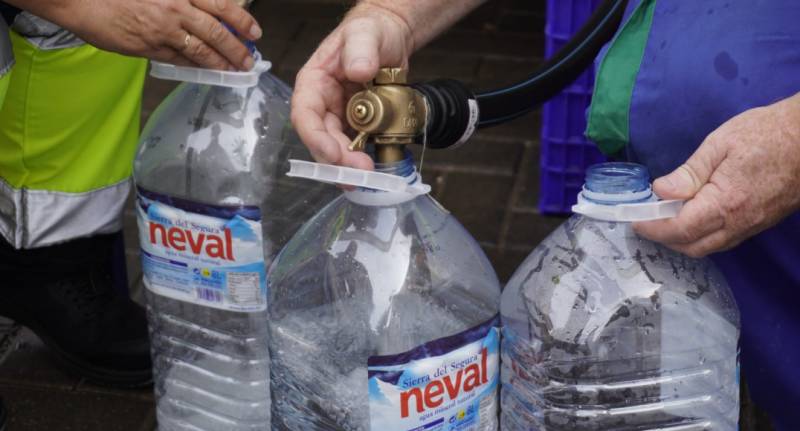
In response, local councils set up emergency water distribution points. Residents were advised to use bottled water for drinking, cooking and personal hygiene, while tap water was deemed safe only for cleaning non-food surfaces, watering gardens and the like. Despite efforts to restore the supply, the water quality remained compromised due to high turbidity and low chlorine levels.
Technicians have been working round the clock all week to clean and disinfect the affected canal sections and by Wednesday, the El Mirador reservoir was reconnected to the distribution network. However,
the water is still not safe to drink.
When something this serious happens, people naturally want answers and someone to blame. A question has been circulating among residents in several municipalities of the Mar Menor ever since Dana Alice forced the authorities to shut off their water: why did this flood, of all times, manage to contaminate drinking supplies when nothing like this has ever happened before?
Of course, the Tabilla boss stressed that, even with these land modifications, the water crisis wouldn’t have occurred if not for an almost unprecedented amount of rainfall.
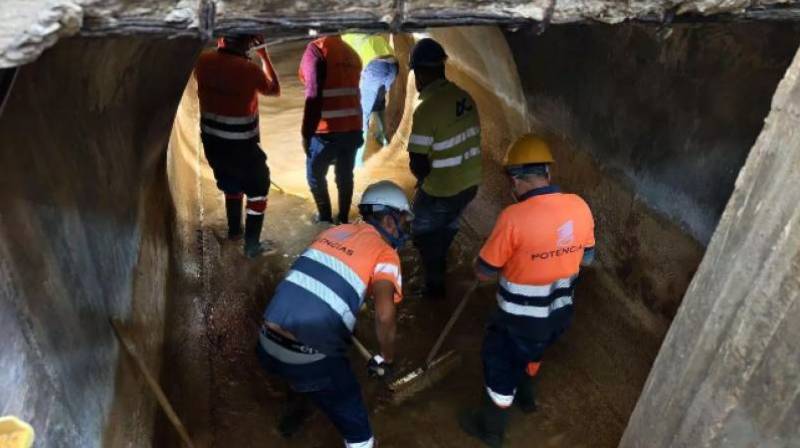
"What happened in this episode must be understood as an absolutely exceptional event, the result of a climatic catastrophe. The flood that devastated the area where the beacon is located, through which mud entered and contaminated a section of the canal, produced rainfall records exceeding 180 litres per square meter."
At the same time, environmental groups such as Ecologistas en Acción are arguing that upstream land developments like more greenhouses, cleared farms and converted land for solar plants have come without coherent planning. They say these changes have worsened run-off and removed natural buffers. Those groups insist that land-use policy is part of the problem, especially where soil has been flattened or stripped bare, leaving little to slow or absorb water.
There’s also local authorities pressing for accountability. Los Alcázares Town Council, led by Mayor Mario Pérez Cervera, has
formally asked the MCT to set up a compensation fund. The idea is to cover losses suffered by residents and businesses, and reimburse emergency costs incurred by the council, things like bottled water, hiring tanks and extra staff. The council complains that Tuesday’s warning that water would be completely shut off came with almost no notice, leaving them no time to organise.
Regional president Fernando López Miras has voiced deep concern over the discharge into the lagoon. Early Friday, the Albujón ravine alone was sending peaks of up to 48,500 litres per second into the Mar Menor. When you add other channels from across the watershed, there were moments when that figure may have hit 100,000 litres per second of nutrient-rich freshwater.
But the lagoon is tough and it’s certainly been through worse in the past. Ángel Pérez Ruzafa of the Scientific Advisory Committee on the Mar Menor has cautioned that while this new deluge is hardly ideal, it doesn’t necessarily spell collapse. Reassuringly, the volume of freshwater involved in this episode was still lower than in the notorious DANA of September 2019, which triggered a mass die-off of fish a month later.

When storms are this destructive, it’s little wonder that meteorologists are looking for new ways to help people prepare. Spain’s State Meteorological Agency, Aemet, has been giving names to major storms since 2017 under the European Storm Naming programme, working alongside Portugal, France, Belgium, Luxembourg and Andorra.
The idea is that a name helps people recognise when a system is more than just another cloudy forecast. It signals that something potentially dangerous is on the way and grabs public attention early.
For anyone who has ever wondered, DANA stands for Depresión Aislada en Niveles Altos, or in plain English, an isolated depression high up in the atmosphere. These systems are unpredictable because they detach from main air flows and drift independently. When the right ingredients come together, i.e. moisture, temperature contrasts and coastal geography, they can unleash intense rain, storms or even snow.
Of course, not every DANA is a problem. Many pass quietly without major impact. That’s why Aemet will reserve names for those that are forecast to bring high-impact weather.
Alice, the DANA that tore through Murcia and Alicante last weekend, was the first to be named under the new rule. For the rest of the 2025-2026 season, there are 21 names on standby, alternating between female and male. The naming will only apply when the forecast calls for probable orange or red alerts. Otherwise, forecasters will stick with the usual technical terms.
When Alice hit, the system was put to the test. Along the Mediterranean coast and the islands, torrential rain fell for hours. Transport ground to a halt, roads flooded and emergency services scrambled. But the name itself proved useful. Alice quickly appeared in warnings, headlines and social media posts, helping people follow updates, understand the scale of the danger and take action sooner.
Murcia
Now that the weather’s a bit cooler, if not necessarily drier, it’s the ideal time to get out and about to do some exploring, and the Region of Murcia has everything the outdoorsey traveller could possibly want.
Whether you're after coastal drama at the Hornillo de Águilas Pier, springtime blossom fields along the Cieza route or the epic Northwest Greenway that follows the old Murcia-to-Caravaca railway line through pine forests and river valleys, there's a trail to match your mood.
Best of all, many of these routes connect up, so you can piece together your own adventure from coast to mountains at whatever pace suits you.
Check out Murcia’s detailed list of greenways
right here.
International traffic continues to dominate the Murcia terminal, growing by 6.6% in September with 100,695 passengers. Regarding operations, flights increased by 3.8% during September with 820 movements.
The shiny new duty-free shops and book swap area are nice touches, but they can't hide the fact that Corvera has been a troubled project from day one.
And now things have got considerably more expensive. Just last week, the regional government was slapped with a €160 million bill after losing a lawsuit to construction giant Sacyr. The company won the concession to build Corvera back in 2007 with promises of a 2012 opening. When the government pulled the plug in 2013 and the whole thing went bankrupt, Sacyr decided it wanted its money back.
Turns out, Madrid Commercial Court agreed.
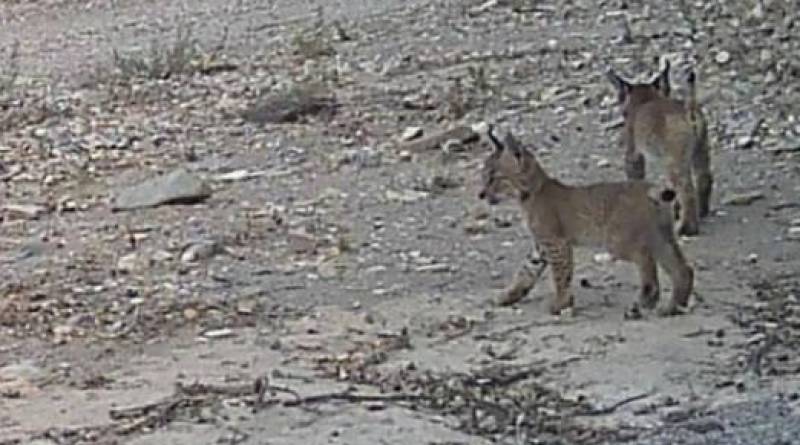
On a much happier and undeniably cuter note, the Iberian lynx reintroduction project in the Lorca highlands has just had its second litter of cubs and this time,
mum Tahúlla gave birth across the border in Vélez-Rubio, Almería. She originally came from Murcia but paired up with Queo, a Doñana lynx who was deliberately released by Andalucía to encourage exactly this kind of romance.
It's a huge win for a project that's had more than its fair share of tragedy, with animals dying from starvation, accidents and unexplained disappearances.
The scheme's ultimate goal is to establish 32 lynxes in this corner of Murcia and for a while it looked like that target would never be reached. But with two litters now confirmed and lynxes starting to roam naturally between Murcia and Andalucía, the ecological corridors are finally doing what they're supposed to.
Regional Minister for the Environment Juan María Vázquez is particularly pleased that Tahúlla gave birth in Almería, calling it proof that the lynxes are expanding their territory naturally and that cooperation between regions is paying off.
The first litter was born to female Urtsu back in May, so there are now six new kittens padding around the highlands, giving everyone involved genuine hope that this species has found its ideal conditions to thrive.
The changes officially came into effect on Wednesday, with crews starting work the night before to replace kilometre markers across the road network.
The western section of the ring road is now the MU-33, the northern access becomes the MU-32, and various chunks of existing motorways have been absorbed into an expanded A-30 route linking Albacete and Cartagena.
More than 400 signs are being swapped out over the next couple of months, split between 308 state-owned markers and 100 belonging to local authorities. Officials insist it won't cause traffic chaos and that the changes are necessary for functionality and continuity within the state highway system.
The new names are already official for navigation and safety purposes, so if your GPS is suddenly arguing with the road signs, now you know why. Best update those sat-navs sooner rather than later.
This musical featuring the Witches of Salem has become the go-to spooky event for thousands of families over the years and organisers have just announced that 2025 will be its last hurrah.
There are 11 evening performances running through October and into early November on the 17th, 18th, 19th, 24th, 25th, 26th and 31st of October, plus November 1st and 2nd, all kicking off at 18.00.
If evenings don't work, there are also matinee shows on October 26th and November 1st at midday.
The experience starts at the panoramic lift before the black candle flame is rekindled and the witches take control of the castle. Tickets are available online at €18 each, or €9 for under-4s, though fair warning, it's probably a bit intense for the really little ones.
See our EVENTS DIARY for more events and activities coming up soon in the Region of Murcia:
Spain
The new pricing guidelines came into effect on Tuesday, covering 13,871 products in pharmacies and another 3,514 used in hospitals. While pharmaceutical companies started supplying at the new reduced prices immediately, there's a bit of a transition period for distributors, so you won't see the savings at the pharmacy counter until December 1st.
The ministry has set a minimum reference price of €1.60 per medication, though 338 essential drugs classified by the WHO have been protected from any price changes to ensure they remain available.
If you're wondering what your regular medications now cost, a box of 20 paracetamol tablets will set you back €1.90, Nolotil is €2.26 and omeprazole comes in at €2.42 for 28 capsules.
Not life-changing amounts for a single purchase, but it all adds up if you're buying regularly.
While we're on the subject of things that could cost you money, let's talk about driving someone else's car in Spain. The good news is it's perfectly legal, provided you have the owner's permission and a valid licence.
Spanish car insurance covers the vehicle rather than the driver, so anyone can get behind the wheel as long as they're not breaking the policy terms. That said, if you're planning to drive someone else's car regularly, it's worth getting added as a named driver to avoid any nasty surprises if you need to make a claim.
Young drivers under 25 and anyone who's held their licence for less than two years are often subject to restrictions or higher premiums, so it's worth checking the policy before you borrow the keys.
If you do drive someone else's car occasionally, carry a document from the owner confirming you have permission, just in case you're stopped by police and need to prove you're authorised.
Most of us are still drying out our raincoats after last week’s rain so it might surprise you to learn that
September 2025 turned out to be one of the warmest on record. According to AEMET, the average temperature across mainland Spain was 19.7°C, sitting 0.6°C higher than normal and making it the twenty-third warmest September since records began in 1961.
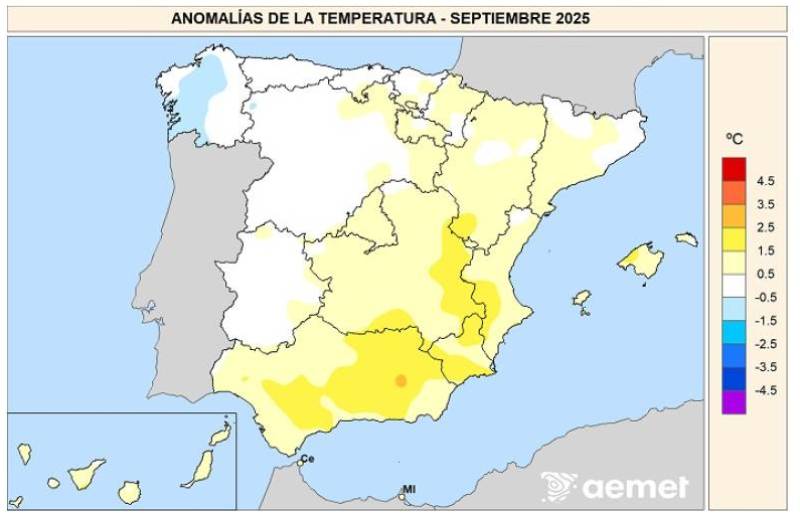
Some areas absolutely sweltered, with Gran Canaria airport hitting 39.9°C on September 19th and four major weather stations recording their highest ever September temperatures.
The real story though is how dry it was. Spain only saw 25.4mm of rain on average, just 57% of what's normal, making it the twelfth driest September on record. Large parts of the centre and southwest were particularly parched, with Castilla-La Mancha, La Rioja and Navarra experiencing extremely dry conditions.
The Mediterranean coast was a different story entirely, going from wet to very wet thanks almost entirely to those torrential downpours in the final days of the month.
Ibiza airport took the prize with 101.1mm falling on the 30th alone, while Valencia saw 96.8mm on the 29th. So while October's DANA might have felt like it came from nowhere, the reality is that September was indeed remarkably dry until those final dramatic days.
And finally, a word of warning if you've been thinking about sticking a fake alarm company logo on your door to deter burglars. While it might seem like a harmless money-saving trick, it can actually land you with some serious fines.

In the worst cases, misusing these logos can even be considered a crime against industrial property, potentially leading to prison sentences of up to three years.
The good news is that generic signs like "Home Under Surveillance" are perfectly legal to display, even if you don't have an actual security system. The problem only arises when you're using logos belonging to professional alarm companies without authorisation.
So if you're looking to deter intruders without breaking the bank or the law, stick to the generic signs and skip the fake company stickers.
Alicante
Street markets are a vital and vibrant part of communities in Spain, offering small businesses an outlet for their goods and great value produce to residents.
It therefore seems strange to understand how one might have been able to operate without an opening licence for about 30 years but has only been shut down now.
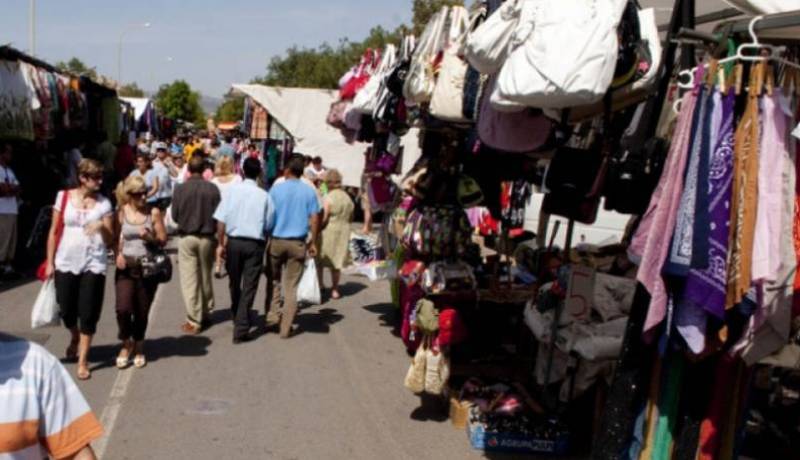 Yet this is apparently the case of El Fogón market in Guardamar del Segura, located on a large plot of land alongside the N-332 opposite the Santa Ana industrial estate, which was known for selling antiques and second-hand clothes, and had numerous food and drinks stalls to satisfy crowds of shoppers every Sunday morning.
Yet this is apparently the case of El Fogón market in Guardamar del Segura, located on a large plot of land alongside the N-332 opposite the Santa Ana industrial estate, which was known for selling antiques and second-hand clothes, and had numerous food and drinks stalls to satisfy crowds of shoppers every Sunday morning.
According to the local mayor, José Luis Sáez, the council had been calling on the owner to legalise its situation “for many years”.
He told local Spanish press that the owner had supplied paperwork but it had not been enough to qualify for the licence.
The deadline to register any objections ran out two months ago and the town hall ordered the market’s closure.
Sáez explained that the market is situated on land which is classified for development and subject to conditions which do not permit this sort of activity.
The mayor noted that the company can appeal in court and request that the closure be suspended until there is a ruling.
The premises were cordoned off by the local police two weeks ago, despite which the market opened again on Sunday October 12, indicating that the fight to save this popular market is not over yet.
While Ryanair has been protesting against what it calls the “excessive fees” charged by Spain’s airport management company, Aena, by slashing the number of flights to many destinations, the Irish airline’s love affair with Alicante-Elche airport continues.
Low-cost airline Ryanair’s winter schedule for Alicante-Elche airport includes 10 new destinations, as well as more frequent flights on popular existing routes from November.
The total number of destinations will be 79, since the addition of Bratislava (Slovakia); Linz, Salzburg (Austria); Bydgoszcz, Rzeszow (Poland); Cardiff, Aberdeen (Wales/Scotland, UK); Stockholm Västeras, Smaland (Sweden); and Lanzarote (Spain).
The new destinations will each be served with two flights per week, except Cardiff and Aberdeen, which will each get three and Bratislava, which will have four.
There are also additional flights on 29 existing routes, including Milan, Marrakesh, Budapest and Edinburgh, among others.
Ryanair said this new offer increases capacity at Alicante by 12%, and will largely operate on the airline’s 16 Alicante-based aircraft, representing a €1.6bn investment, supporting over 6,700 local jobs, and driving year-round tourism to the province.
In contrast, the airline insists it has been forced to cut 1,000,000 seats from its wider Spanish Winter 2025 schedule due to AENA’s excessive 6.62% charge increase and ineffective ‘incentive schemes’, which are making regional airports financially unviable to operate.
Ryanair’s full winter 2025 schedule is available to book now at Ryanair.com, with flights to/from Alicante available from €21.99 to travel from November until the end of March 2026.
Patients at Torrevieja Hospital may sleep more easily since more than 40% of the beds have been replaced.
The new beds are equipped with advanced systems for ergonomics, mobility, and pressure injury prevention.
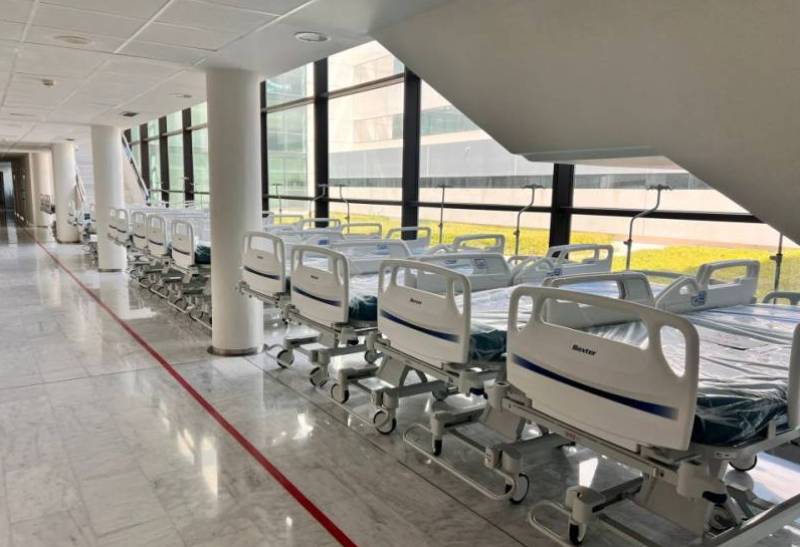 According to the hospital, these improvements enhance both “patient comfort and the work of healthcare staff”.
According to the hospital, these improvements enhance both “patient comfort and the work of healthcare staff”.
In addition, four high-tech critical care beds have been added to the Intensive Care Unit, thereby strengthening the hospital’s capacity to respond to complex clinical situations and maintaining the unit’s total capacity of 18 beds.
The hospital has more than 270 beds in total, including those in general inpatient wards as well as in specialised units such as ICU, Psychiatry and Paediatrics.
It has replaced 100 of these, some of which had been in use for over 15 years, with an investment of €309,819 (including IVA/VAT).
According to its 2024 management report, the hospital recorded a total of 14,163 inpatient admissions (slightly fewer than the 14,521 the previous year), resulting in a reduced bed occupancy rate of 83.45%, nearly five percentage points lower than in 2023 (88.16%).
The report also recorded 83,549 bed-days, with an average length of stay of 6.62 days per patient, slightly below the 6.65 days reported in the previous year.
In 2024, the Torrevieja Health Department served a registered population of 215,558 people, an increase of more than 8,000 compared to the previous year.
This catchment area has the highest proportion of residents aged over 65 (28.8%) and foreign residents (51%) in the entire Valencian Community.
The report says this demographic contributes to healthcare demand characterised by “complex clinical profiles and significant pressure on health services”.
And finally, there was a sad end to the search for a British expat who went missing in Torrevieja on September 20.
Family and friends had been desperately searching for 63-year-old Marc Tulloch Hewson, with help from the authorities and volunteers following an appeal for information on social media.
A body was discovered in a wooded area behind housing in the Lago Jardín area, where Marc had lived, and his sister Fiona confirmed it was him.
Spanish authorities have not officially identified the remains yet and will carry out a postmortem in the coming days.
Until then, no further details are expected from investigators, who continue to work on confirming the circumstances.
Fiona thanked everyone who had joined the search, reassuring supporters that “they did everything they possibly could.
The outcome has brought a sombre close to a process that saw local expats rally together, posting pleas for help, sharing photographs and retracing Marc’s last known steps throughout Torrevieja, Los Balcones and Orihuela Costa.
For many in the area, the search may be over, but the support and solidarity shown during these difficult weeks has left a lasting mark among those living far from home.
Andalucía
Andalucía is facing a health alert this week, as West Nile Virus has been detected in mosquitoes in several parts of the region, including Pulpí (Almería), Chiclana and Tarifa (Cádiz), and areas around Sevilla and Málaga.
The good news is the only human case so far involves a resident of Mojacar in Almería, who developed mild symptoms back in July and has fully recovered. The 323 tests on local residents since have come back negative so far. However a horse infected near Málaga highlights that the virus may have spread and the risk is ongoing.
Authorities are ramping up mosquito control, especially in wetland areas and around homes, while launching public awareness campaigns to prevent bites and eliminate breeding sites.
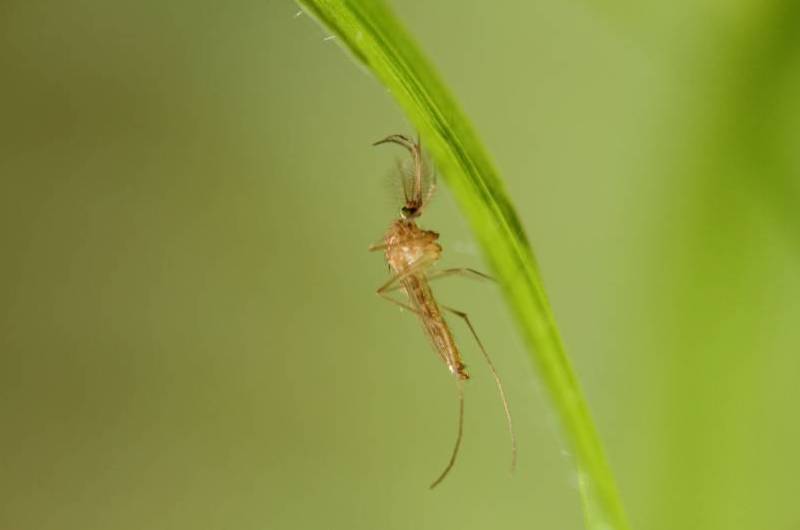 The virus, usually transmitted from infected birds to humans via mosquitoes, can be symptom-free for many but sometimes causes fever, headaches, or, rarely, severe neurological illness.
The virus, usually transmitted from infected birds to humans via mosquitoes, can be symptom-free for many but sometimes causes fever, headaches, or, rarely, severe neurological illness.
Longer and warmer summers are making mosquito-borne diseases more common across Europe, so vigilance remains key.
Turning from public health to crime, a significant arrest has been made on the Costa del Sol.
Andrew Doran, a 41-year-old British man wanted by UK authorities for his role in an organised cocaine trafficking network, was arrested in Marbella’s Nueva Andalucía area in July after investigators traced his online banking activity.
Despite living in Málaga for several years, it was his digital footprint that led police directly to him.
On October 1, Doran was extradited to the UK and two days later appeared before Newcastle Magistrates’ Court charged with four drug-related offences and conspiracy to kidnap. The National Crime Agency believes he was part of a major criminal organisation supplying cocaine across northeast England.
The case has prompted a renewed search for two other suspects, Thomas Michael Dunwoodie and Paul Anthony Elsey, who fled the UK in 2022 before facing charges. Authorities are urging the two men to face the consequences and turn themselves in, as the investigations into the drug network continue.
In a darker turn, a tragic discovery was made, also in Málaga, when a passer-by found a sealed sack containing a body in the Casasola reservoir swamp on Tuesday October 14.
With the area difficult to access, local police quickly verified the find before the Guardia Civil took over the investigation. Firefighters assisted with the recovery of the body at around 3.00pm, which was then sent to the Málaga Institute of Forensic Medicine for autopsy to establish cause of death.
At this early stage, no arrests have been made and authorities have released no further details about the victim. The Guardia Civil investigation remains ongoing as they piece together the circumstances surrounding this grim discovery.
You may have missed…
- Portmán Bay regeneration back on with fresh plan to recover coastline
Exciting news for Portmán Bay: the Ministry for Ecological Transition and the Demographic Challenge is set to relaunch the long-awaited regeneration project.
- Northern lights could dazzle Spain this month
The ethereal display, usually only seen under Scandinavian skies, could appear between Monday October 20 and Wednesday October 29, thanks to strong geomagnetic activity expected from the Sun..
- Murcia tops bankruptcy rankings as household debt soars
From April through June, the Region once again reported the most personal bankruptcies in Spain, with a notable surge in cases brought by individuals striving to escape mounting debts.
- The paid leave you can request as an employee in Spain (and what's coming down the line)
If you're working in Spain as an employee, it's good to know that there are several situations where you can take time off and still get paid. These entitlements are set out in the Workers' Statute (Estatuto de los Trabajadores), which outlines the types of leave employees are entitled to.
- Spain changes child-related retirement bonus: Only parents truly affected by career breaks will qualify
The Spanish government is making important changes to the child retirement supplement, a benefit designed to help parents with their retirement income.
And that’s all we’ve got for you this week. See you again next Friday.
Happy weekend. 
article_detail

|


 In response, local councils set up emergency water distribution points. Residents were advised to use bottled water for drinking, cooking and personal hygiene, while tap water was deemed safe only for cleaning non-food surfaces, watering gardens and the like. Despite efforts to restore the supply, the water quality remained compromised due to high turbidity and low chlorine levels.
In response, local councils set up emergency water distribution points. Residents were advised to use bottled water for drinking, cooking and personal hygiene, while tap water was deemed safe only for cleaning non-food surfaces, watering gardens and the like. Despite efforts to restore the supply, the water quality remained compromised due to high turbidity and low chlorine levels. "What happened in this episode must be understood as an absolutely exceptional event, the result of a climatic catastrophe. The flood that devastated the area where the beacon is located, through which mud entered and contaminated a section of the canal, produced rainfall records exceeding 180 litres per square meter."
"What happened in this episode must be understood as an absolutely exceptional event, the result of a climatic catastrophe. The flood that devastated the area where the beacon is located, through which mud entered and contaminated a section of the canal, produced rainfall records exceeding 180 litres per square meter." When storms are this destructive, it’s little wonder that meteorologists are looking for new ways to help people prepare. Spain’s State Meteorological Agency, Aemet, has been giving names to major storms since 2017 under the European Storm Naming programme, working alongside Portugal, France, Belgium, Luxembourg and Andorra.
When storms are this destructive, it’s little wonder that meteorologists are looking for new ways to help people prepare. Spain’s State Meteorological Agency, Aemet, has been giving names to major storms since 2017 under the European Storm Naming programme, working alongside Portugal, France, Belgium, Luxembourg and Andorra.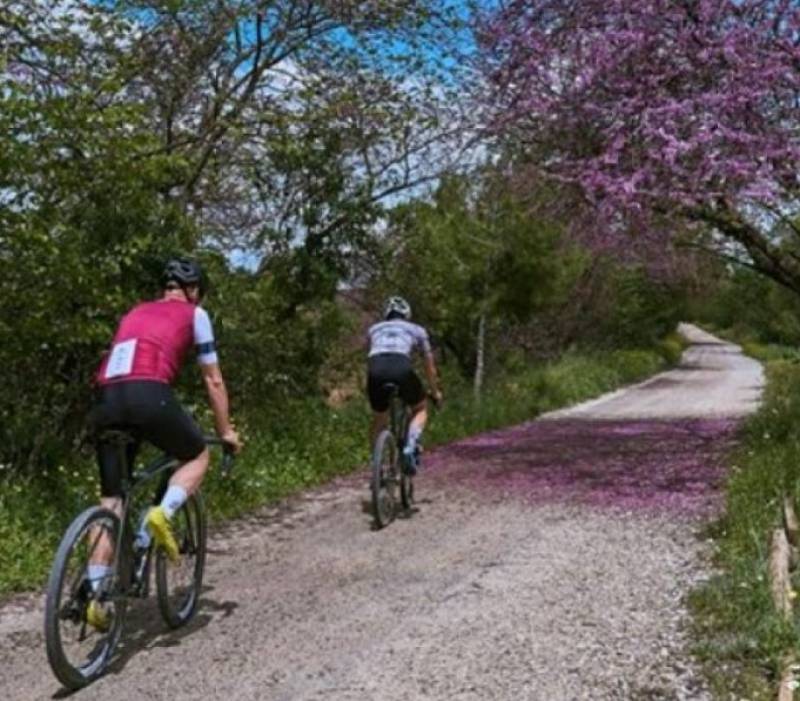
 On a much happier and undeniably cuter note, the Iberian lynx reintroduction project in the Lorca highlands has just had its second litter of cubs and this time, mum Tahúlla gave birth across the border in Vélez-Rubio, Almería. She originally came from Murcia but paired up with Queo, a Doñana lynx who was deliberately released by Andalucía to encourage exactly this kind of romance.
On a much happier and undeniably cuter note, the Iberian lynx reintroduction project in the Lorca highlands has just had its second litter of cubs and this time, mum Tahúlla gave birth across the border in Vélez-Rubio, Almería. She originally came from Murcia but paired up with Queo, a Doñana lynx who was deliberately released by Andalucía to encourage exactly this kind of romance.
 Some areas absolutely sweltered, with Gran Canaria airport hitting 39.9°C on September 19th and four major weather stations recording their highest ever September temperatures.
Some areas absolutely sweltered, with Gran Canaria airport hitting 39.9°C on September 19th and four major weather stations recording their highest ever September temperatures. In the worst cases, misusing these logos can even be considered a crime against industrial property, potentially leading to prison sentences of up to three years.
In the worst cases, misusing these logos can even be considered a crime against industrial property, potentially leading to prison sentences of up to three years. Yet this is apparently the case of El Fogón market in Guardamar del Segura, located on a large plot of land alongside the N-332 opposite the Santa Ana industrial estate, which was known for selling antiques and second-hand clothes, and had numerous food and drinks stalls to satisfy crowds of shoppers every Sunday morning.
Yet this is apparently the case of El Fogón market in Guardamar del Segura, located on a large plot of land alongside the N-332 opposite the Santa Ana industrial estate, which was known for selling antiques and second-hand clothes, and had numerous food and drinks stalls to satisfy crowds of shoppers every Sunday morning. According to the hospital, these improvements enhance both “patient comfort and the work of healthcare staff”.
According to the hospital, these improvements enhance both “patient comfort and the work of healthcare staff”. The virus, usually transmitted from infected birds to humans via mosquitoes, can be symptom-free for many but sometimes causes fever, headaches, or, rarely, severe neurological illness.
The virus, usually transmitted from infected birds to humans via mosquitoes, can be symptom-free for many but sometimes causes fever, headaches, or, rarely, severe neurological illness.
























